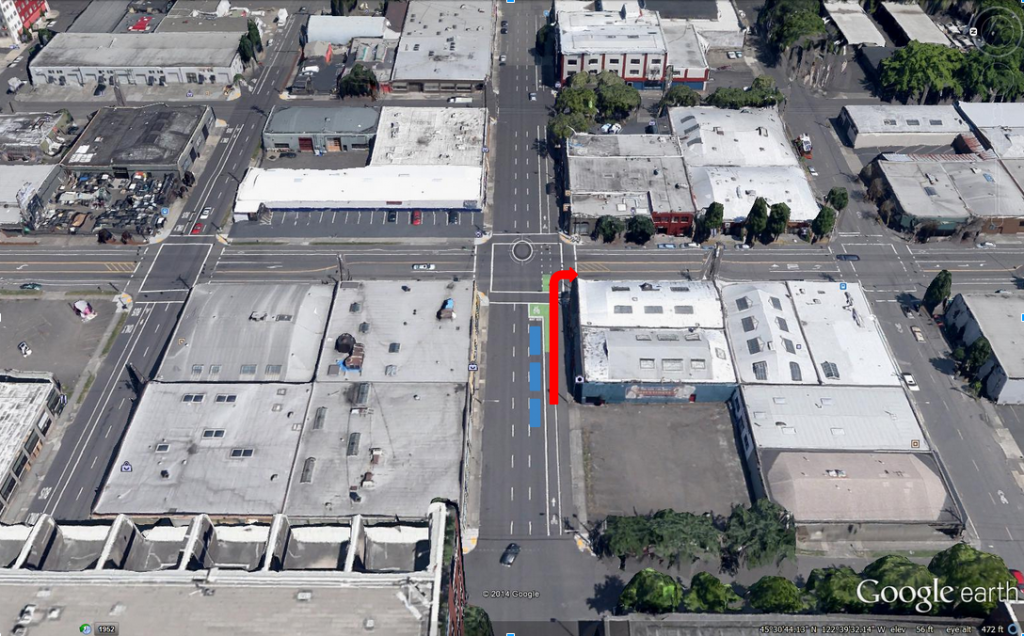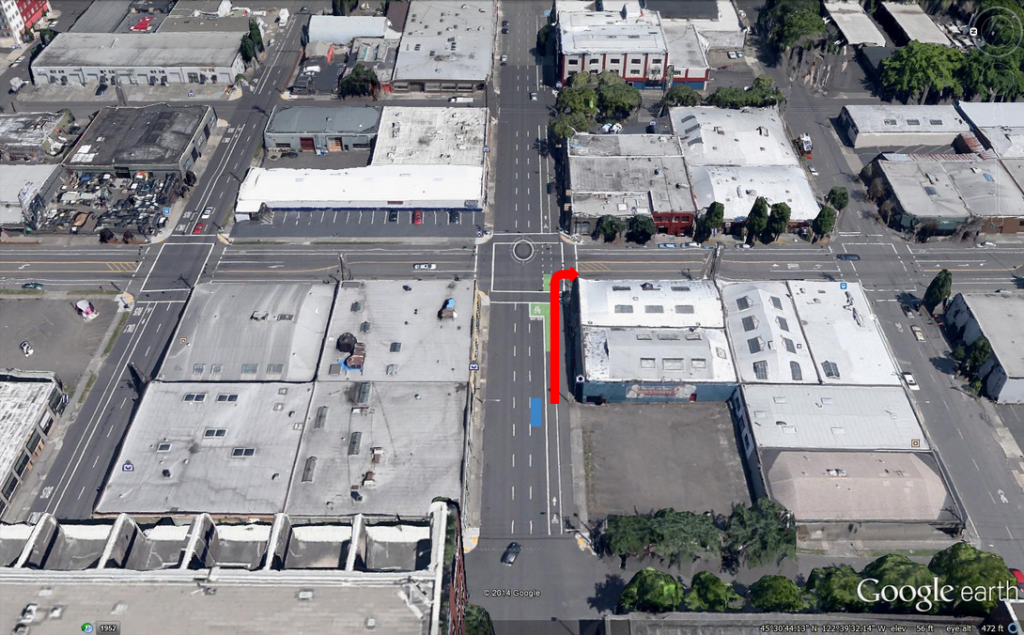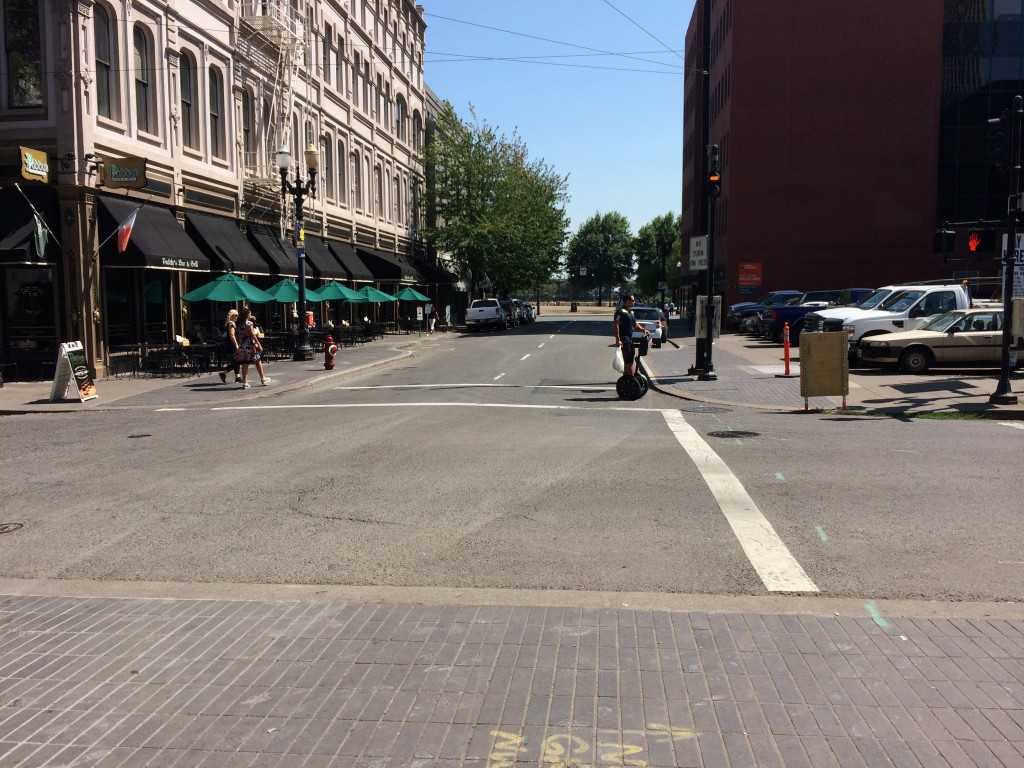At our bicycle legal clinics, we are often asked about motor vehicles operating in the bicycle lane. While a bicycle lane has one of the purest rights-of-way in the Oregon Vehicle Code, the law does allow motor vehicles to operate upon the bicycle lane in certain circumstances.
Oregon law contains a blanket prohibition of the operation of a motor vehicle upon a bicycle lane. ORS 811.435(1), so in most situations a motor vehicle operating in a bicycle lane is operating illegally.
However, like a lot of prohibitions in the Oregon Vehicle Code, there is a statute that allows exceptions. ORS 811.440 enumerates the circumstances in which a motor vehicle is allowed to operate on a bicycle lane.
Most of the exceptions require no further explanation:
- entering or leaving an alley, private road or driveway;
- required in the course of official duty (think police and fire vehicles); and
- implement of husbandry (farm vehicle) that crosses into the bicycle lane to permit other vehicles to pass.
However, ORS 811.440(2)(a) contains a big exception in three words that causes a lot of traffic conflicts:
Allowing motor vehicles to operate upon the bicycle lane while making a turn may seem obvious. Otherwise, how would they be able to make the turn? But the exception “making a turn” could potentially cover a lot of scenarios and can lead to some confusion and ambiguity:
Scenario 1: The Simple Right Turn

Here, a motor vehicle makes a simple right turn at a green light, yielding to bicycles in the bicycle lane, from the right hand “B” lane. Did the motor vehicle driver violate Oregon law? No. They are permitted to cross over the bicycle lane to make the turn. However, despite motor vehicle operators being allowed to operate on bicycle lanes while turning like this, there is no exception to the duty to yield the right of way to bicycle riders operating on a bicycle lane, found in ORS 811.050.
Scenario 2: The Sneak Around

In this scenario, an inpatient motor vehicle operator comes up with a plan to pass the cars waiting to proceed straight or turn left by driving to the right of the cars in the bike lane. Did the driver violate Oregon law? Yes. There is no exception for approaching a turn on the bicycle lane, only for making a turn. The driver also violated ORS 811.415 Unsafe passing on the right, which prohibits motor vehicles (but not bicyclists) from overtaking and passing other vehicles on the right.
Scenario 3: The Mid-Block Cruiser

I have occasionally seen a motor vehicle operator who, knowing they need to make a right turn ahead, and seeing a gap in bicycle traffic in the bicycle lane, moves their car over mid-block and occupies the bicycle lane while moving forward to make their turn. Is this legal? No. Like the example above, ORS 811.440(2)(a) only allows a car to operate on a bicycle lane while making a turn, not while preparing to make a turn.




